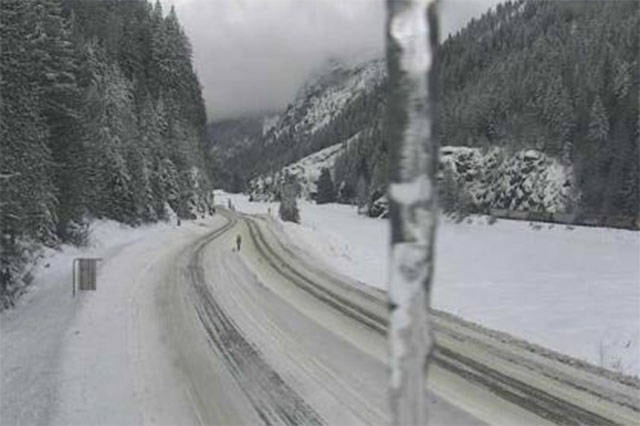The Ministry of Transportation and Infrastructure is reminding people to stay safe this winter season by preparing themselves and their vehicles for driving.
“We want everyone to drive safely and get home to their families this winter,” said Claire Trevena, Minister of Transportation and Infrastructure. “Safe winter driving is a shared responsibility and I urge people do their part by using good winter tires, planning ahead by checking DriveBC, slowing down and driving to conditions.”
On average, each year in B.C., the number of fatal crashes caused by driving too fast for conditions doubles in December, compared to October - 246 crashes in December 2017, compared to 123 in October. The winter months of November, December and January are a particularly dangerous time for people who drive for work, with nearly 28% of all work-related crashes resulting in injury and time-loss claims occurring during these months.
“Safety on the job must always be the top priority for employers and workers alike, and it can be particularly difficult when the workplace is mobile,” said Harry Bains, Minister of Labour. “I urge all drivers to be extra vigilant as we move into the winter season with its challenging road conditions. Be alert, be cautious and let’s all get home safely at the end of each shift.”
Starting Oct. 1, drivers were required to equip their vehicles with winter tires (mountain/snowflake or M+S) with a minimum 3.5 millimetre tread depth, and commercial vehicles were required to carry chains. Tires marked with a mountain/snowflake symbol on the sidewall offer the best traction on snow and ice and in cold weather.
Winter tire regulations end on March 31 on many highways. However, this year the regulations have been extended to April 30 on select mountain passes and rural highways, to account for early spring snowfall.
Tips for safe winter driving:
* Plan the route ahead of time - Check current highway and weather conditions on DriveBC.ca and @DriveBC on Twitter. Delay travel if conditions are unsafe.
* Invest in winter driving training - Learn how to brake safely, how to get out of a skid and how cars handle in winter weather.
* Slow down - The posted speed limit is the maximum speed under ideal driving conditions, so when inclement weather hits, slow down and drive with extra care.
* Be prepared - Bring suitable clothing, emergency supplies and a fully charged cellphone in case of travel delays or a motor vehicle incident.
READ MORE: Chip truck overturned on Maple Drive near Plywood Hill
